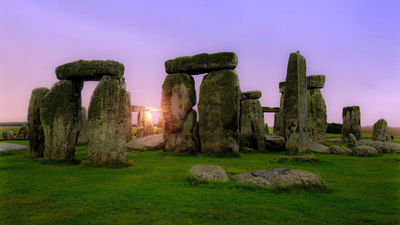A huge relic that draws a circle with a diameter of 2 km is found near 'Stonehenge'

by
Stonehenge is a prehistoric site that consists of megaliths lined up in a circle in the south of England and the earthworks surrounding it. It is believed that the erect megaliths were lined up between 2500 BC and 2000 BC. I am. Researchers investigating the vicinity of Stonehenge reported that they found 'a trace of a huge pillar forming a circle with a diameter of 2 km or more.'
A Massive, Late Neolithic Pit Structure associated with Durrington Walls Henge. Gaffney et al. Internet Archeology 55.
https://intarch.ac.uk/journal/issue55/4/full-text.html
Massive prehistoric circle near Stonehenge:'Astonishing discovery' offers new insights into lives of Neolithic ancestors --ScienceDaily
https://www.sciencedaily.com/releases/2020/06/200622164652.htm
Biggest prehistoric monument in UK discovered just a stone's throw away from Stonehenge | Live Science
https://www.livescience.com/ring-of-pits-near-stonehenge.html
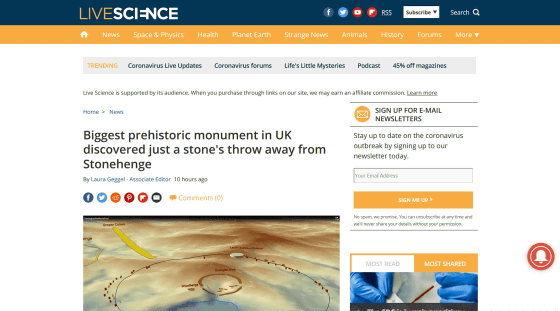
To date, several archaeological sites have been discovered near Stonehenge, such as
Members of the Stonehenge Hidden Landscapes Project, which is investigating the remains of Stonehenge and its surroundings, found some of the ``giant'' giants found during an archaeological survey around Darlington Walls in the summer of 2019 I realized that the 'hole' was not created naturally. The research team has discovered as many as 20 holes so far, it was said that the diameter of the hole was at least 10 m and the depth was 5 m, which was huge.
Radiocarbon dating of bones and other deposits found in these holes suggested that the holes were excavated during the Neolithic period from about 2800 BC to 2100 BC. This is roughly in line with the time when it was believed that Darlington Walls was created.

When each hole was discovered, it was thought that the holes were naturally created by the nature of limestone. However, after confirming the positional relationship of each hole on a larger scale and repeating the investigation, it was concluded that the hole was an artifact. 'We gradually began to believe that what we were seeing was not natural,' said Richard Bates , a member of the research team at St Andrews University . '.
The following image shows the positional relationship between Woodhenge (left circle) and Darlington Walls (right circle). It's easy to see that Darlington Walls is a fairly large structure.

From a further perspective, there are some red dots across Woodhenge and Darlington Walls. This red dot is the remains of the huge hole newly identified this time.
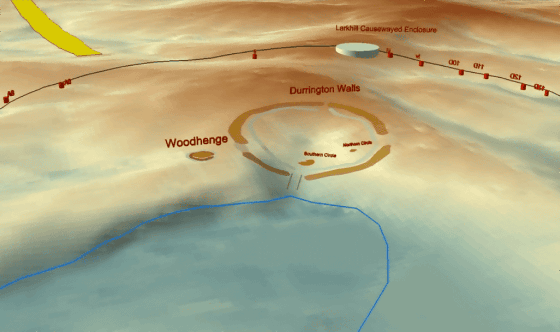
The huge holes are scattered in a huge circle that surrounds Woodhenge and Darlington Walls, and unless you look at it on a fairly large scale, you will not know that it is circular. The diameter of a huge circle is 2km.
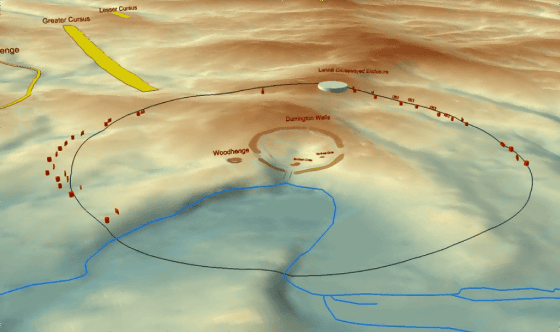
Outside this circle, Stonehenge exists.
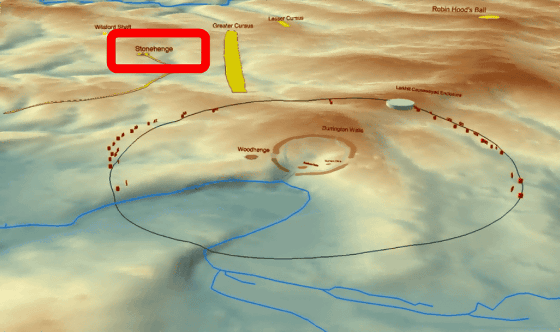
It is said that the number of holes identified by the researchers was 20 at the time of writing the article, but it seems that there were originally 30 or more holes.
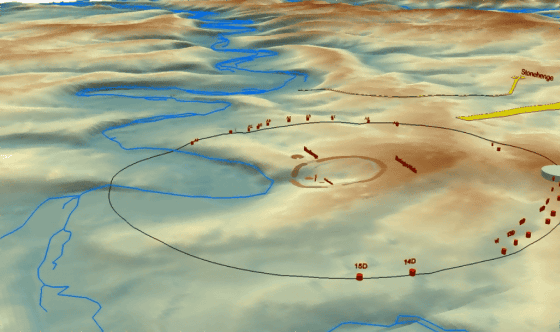
The research team thinks that the hole discovered this time might have marked the boundary with the sacred place. 'It's one idea whether the line of holes was 'a range that only a specific person can cross,'' said Bates, with multiple enclosures such as Darlington Walls and Woodhenge He points out that it may have shown the range within which access is possible depending on the social hierarchy.
Although the huge remains discovered this time are unique, it is also known that in the Neolithic England people made a lot of effort to make complex structures such as Stonehenge. It is unclear how the Neolithic people decided the position to dig a hole, but he said he may have used some kind of measurement system to measure the distance.
'The size of the holes and circles that surround the Darlington Walls is unprecedented in the UK. This is the importance of the Darlington Walls and the complexity of the monuments created around Stonehenge,' said Prof. , Shows that the Neolithic people had the ability and desire to record their cosmology in ways and scales that exceeded our expectations.”

by Loco Steve
Related Posts:
in Note, Posted by log1h_ik


